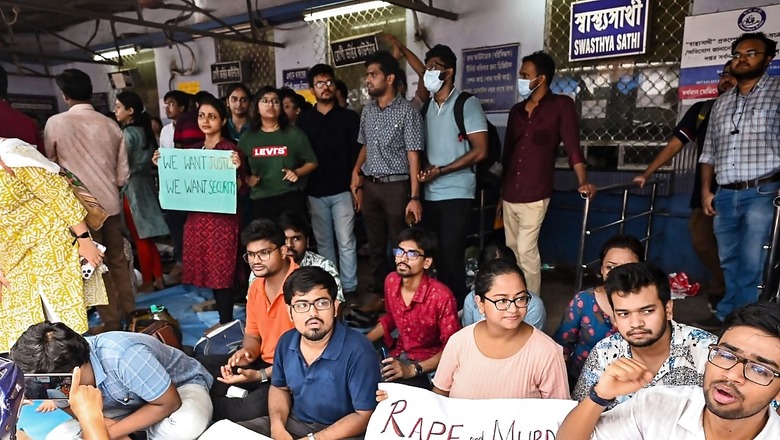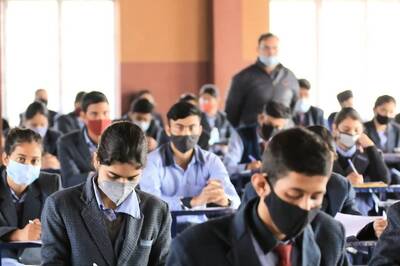
views
The CBI has a tough task ahead as it takes over the investigation into the brutal rape and murder of a young doctor at RG Kar Medical College in Kolkata, five days after her body was discovered.
The victim’s family and protesters are raising serious concerns about the possible involvement of more than one person in the crime. The case’s outcome now hinges on the crucial DNA profiling of the fluid found on the victim, which could either confirm or complicate the investigation.
The contaminated crime scene, delayed evidence collection, re-examining witnesses, and reconstructing the crime scene now add to the major hurdles for the investigators of the Central Bureau of Investigation (CBI), with the central agency having had several run-ins with Kolkata Police in terms of handing all evidence, case diary and other details on time. However, this time, the case may be different as the chief minister, for the first time in her decade-long tenure, almost volunteered to hand over the case to the CBI.
Following the viral spread of the handwritten magistrate inquest report on social media, disturbing details emerged about the injuries sustained by the 31-year-old doctor. The report allegedly described multiple severe injuries, including bleeding eyes and private parts, a torn pelvic girdle, and a strangulated neck bone.
It’s crucial to distinguish between a magistrate inquest report and an autopsy or post-mortem report in this context. A magistrate inquest report, often referred to as a Surathal report, documents the external observations made by officials at the scene. It is a preliminary assessment that records visible injuries and conditions. In contrast, a post-mortem report is far more invasive. The body is taken to a forensic examination center, where it undergoes a thorough autopsy, including internal examination and detailed forensic analysis to determine the exact cause of death.
A section of protestors, some experts and some of her peers also started claiming that there was the presence of fluid of three men on her body. However, at the current stage of investigation, the allegations appear unsubstantiated unless the investigators receive the reports of the DNA profiling of the samples of the main accused and the fluid found on the victim’s body. This is the most crucial piece of evidence now for the CBI. Sources in Kolkata Police told News18 that the required samples have already been sent for DNA profiling.
What are the apparent challenges for CBI?
A team of the special crime branch of the CBI and a special team of forensic experts landed in Kolkata early on Wednesday morning. The custody of the prime accused Sanjoy Roy has been handed over to the central agency by Kolkata Police and the process of handing over the case diary, other related evidence and medical reports is still on.
The challenges for the CBI include a contaminated crime scene. The central agency has to now reach the spot and analyse the crime scene, if it was protected and sealed properly going by the investigation rules. With five days having passed, the integrity of the crime scene is a major concern. Any potential evidence may have been tampered with or lost, making it difficult to establish a clear forensic link between the crime and the perpetrator.
A delayed evidence collection may mean that crucial forensic evidence — such as DNA, fingerprints, or electronic data — could be degraded or compromised. This significantly hinders the agency’s ability to build a robust case based on scientific evidence.
If there has been any political or local influence, as claimed by the protesters, the CBI may be in for additional trouble. In that case, the central agency must navigate potential obstructions and non-cooperation from those who may have a vested interest in controlling the narrative.
Moreover, in an environment where civic police volunteers wield significant power, witnesses may be too scared to come forward or provide truthful testimony. The CBI will need to ensure the protection and confidence of witnesses, which could be difficult in such a politically charged atmosphere.
With the case already drawing significant public and media attention, the agency must work meticulously to avoid accusations of bias or political manipulation while maintaining the integrity of the investigation.
Reconstruction of the crime scene is one of the foremost investigation requirements. Almost five days have passed since the crime was committed. So, reconstructing the exact sequence of events leading to the crime becomes increasingly difficult. The CBI will need to rely on fragmented and possibly inconsistent witness accounts, CCTV footage, and digital evidence to piece together the timeline. With all these challenges, and given the sensitivity and complexity of the current situation, it appears to be an uphill task for the CBI in delivering justice amidst widespread scrutiny.















Comments
0 comment